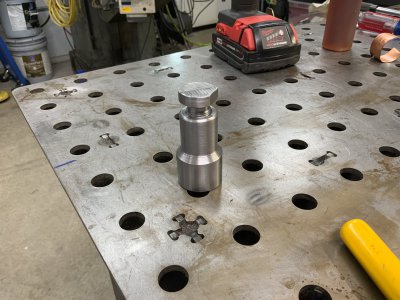Yes, the galling problem with stainless comes from the steel being relatively soft and gummy. With two parts of similar properties, they weld together due to the heat from friction, or debris in the threads can cause it too. By using a different type of steel for the two parts in contact, you don’t get that because the properties are different. If you want to use stainless for this, if one part is a 300 series grade, make the other part out of a 400 series and it will be less likely to gall. You can even harden the 400 series piece to make it more resistant to galling. The stress proof should work too.Somewhere along the way I read or heard it's a good idea to have different materials to avoid galling.
Is this true?
I have some stress proof.
Just a guess, but wondering if the ultrasonic cleaner removed the chromium oxide layer and exposed fresh steel on steel and caused the galling. Did you assemble it right after coming out of the cleaner? If so, it might not have had time to build up the oxide layer.
When I worked for the centrifuge company, the disk stack centrifuges had a lock ring that kept the bowl top on the bowl bottom and was under a lot of pressure since it was also compressing the disk stack. These parts were made from a duplex steel, so had some properties similar to austenitic stainless (300 series). The threads and mating surfaces would gall easily, so we needed to make sure all the surfaces were in good condition and well lubricated. This never happened to me, but I heard stories that the lock rings (that could be up to about 3 feet diameter) had to be cut off on a few machines because it was galled so bad. We also had problems with a different type of centrifuge that had a lot of stainless bolts holding everything together. If you detected any damage to the threads, we threw the bolts out and replaced with new, it was very easy to get a bolt stuck in the stainless components.




